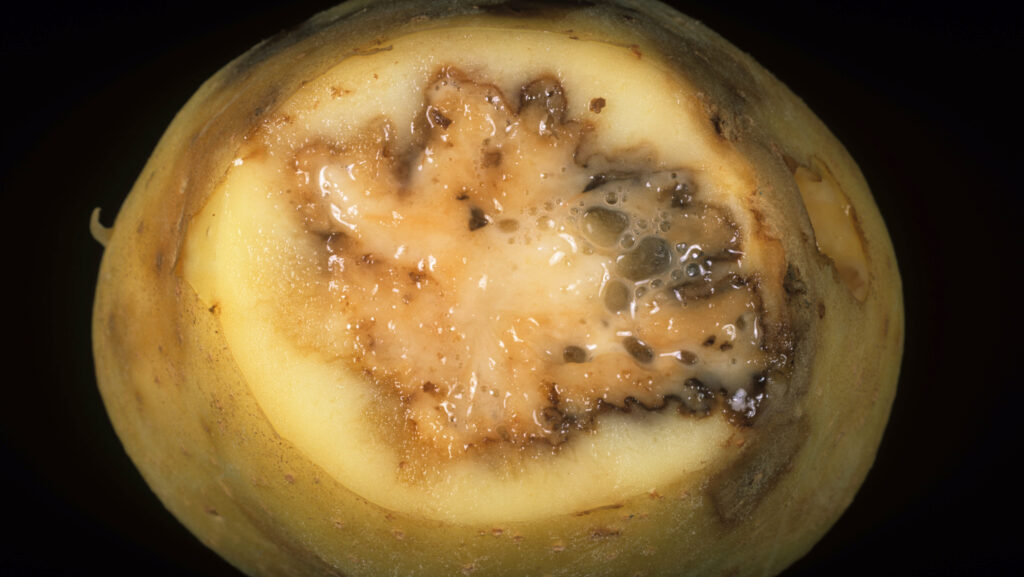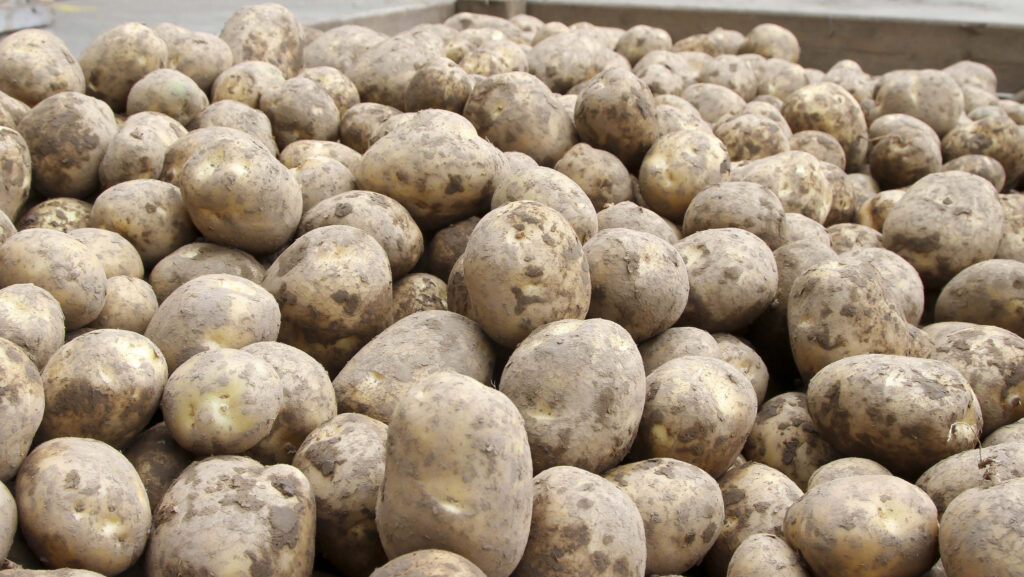Notifiable potato disease detected in Polish imports
 © Nigel Cattlin/Alamy Stock Photo
© Nigel Cattlin/Alamy Stock Photo Two consignments of ware potatoes imported from Poland have tested positive for ring rot, a notifiable disease that could pose a serious threat to domestic production if allowed to establish in the UK.
The discovery has prompted immediate action from the UK Plant Health Service (PHS), a collaboration of government agencies that protects the UK’s plants and trees from pests and diseases.
UK PHS is working in conjunction with Poland’s National Plant Protection Organisation to determine the source of the contamination.
See also: How to stop rhizoctonia denting potato yields this spring
Inspections revealed that the affected consignments were linked to the same Polish exporter, raising concerns about the potential spread of the disease in the UK market.
Fortunately, follow-up tracing efforts have confirmed that no agricultural properties or potato growers were affected, as affected locations were not tied to agriculture.
Enhanced measures
UK authorities have now enacted enhanced inspection measures for all consignments of Polish ware potatoes, with the inspection rate escalated to a 100% threshold, up from the previous 50%.
The more rigorous protocol includes latent testing of 400 tubers per consignment, effectively doubling the previous requirement of 200 tubers.
This aims to reduce the risk of any contaminated shipments being missed.
Should any consignments exhibit suspect symptoms, they will be placed on hold pending further diagnosis, ensuring any potential outbreaks are swiftly contained.
Furthermore, consignments originating from the implicated Polish exporter will be held until testing results are confirmed, and any found to be infected will be required to be destroyed under a Statutory Plant Health Notice.
This precautionary measure underscores the severity of the situation and UK PHS’s commitment to maintaining plant health standards.
More surveillance
Surveillance efforts will be expanded to identify any infected or at-risk tubers or plants across production sites and other relevant premises, including those handling machinery, vehicles, and packaging materials.
The implications of any findings at processing facilities could lead to a Statutory Plant Health Notice, mandating comprehensive cleaning and disinfection before operations can resume.

© GNP
In a bulletin on Defra’s UK plant health portal, importers of ware potatoes were reminded to consult the official guidelines, available on the gov.uk website.
Any parties involved in the importation process are encouraged to reach out to Animal and Plant Health Agency or the Plant Health and Seeds Inspectorate should they require any further clarification.
Industry reaction
GB Potatoes chief executive officer Scott Walker told Farmers Weekly that the industry takes plant health and biosecurity extremely seriously and the detection of ring rot in the consignments is a concerning development.
“We fully support the precautionary measures implemented by the UK Plant Health Service and welcome the decision to increase inspection rates to 100% and to strengthen latent testing protocols.
“This is a necessary step to prevent the introduction and spread of this highly damaging disease within the UK supply chain,” said Scott.
He stressed that it is essential that all imported potatoes meet the highest phytosanitary standards.
“While the infected consignments were not linked to UK potato growers, this incident underscores the need for stringent border controls and ongoing monitoring to protect domestic production from disease threats.”
Safe Haven
Ring rot is widespread in other parts of the world and cases have been reported in numerous countries across Europe.
The first UK outbreak of ring rot occurred in 2003 on a seed potato producing farm in Wales, with the source traced back to imported input stock from The Netherlands.
In the aftermath, one of the outcomes was the introduction of a Safe Haven Standards scheme in 2005, which is designed to protect British stocks from outbreaks of ring rot and other diseases like Dickeya.
Since then, one further outbreak in 2013 – again from infected imported European seed – was successfully eradicated.
With British seed supplies tight this year, there could be a temptation to use imported seed or even small, imported ware potatoes as seed, practices which Scottish Agronomy’s potato specialist Eric Anderson advises against.
He added that importing seed infected with strains of late blight resistant to key fungicides is already a risk, as they are widespread across Europe and only isolated cases have been found in GB.
“The discovery of ring rot in these ware consignments is another warning that growers should be sourcing high-quality certified seed from within GB, whenever possible.
“As Safe Haven Standards cover the majority of our seed production, this should help avoid outbreaks of a disease that we’ve managed to contain so far.”
What is ring rot?
- Caused by a bacterial pathogen Clavibacter sependonicus
- Favoured by cool climates
- Yield loss in individual crops in the US has been as high as 50%
- Initial symptoms are visible when tubers are cut across the heel end and tissue around the vascular ring appears glassy and water soaked
- Advanced infection sees this vascular ring become discoloured and a soft, cheese-like rot develops, which will sometimes ooze when the tuber is squeezed
- Is spread from diseased to healthy tubers by direct contact, particularly where the latter are damaged
- Infected groundkeepers or crop debris, contaminated wash water or contact with contaminated equipment are also implicated in its spread
- It does not over winter well in soil, but bacterium can survive in a dry state for years in contaminated boxes, stores, or machinery, so costs of eradication are very high
- Ring rot is classified as a quarantine organism in the UK so is subject to statutory control to prevent its introduction and spread.

